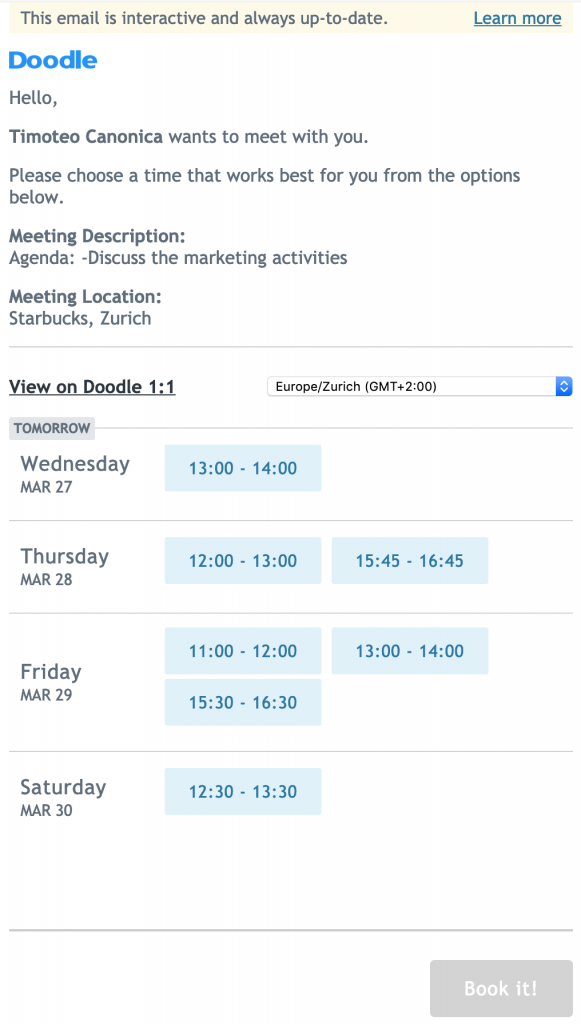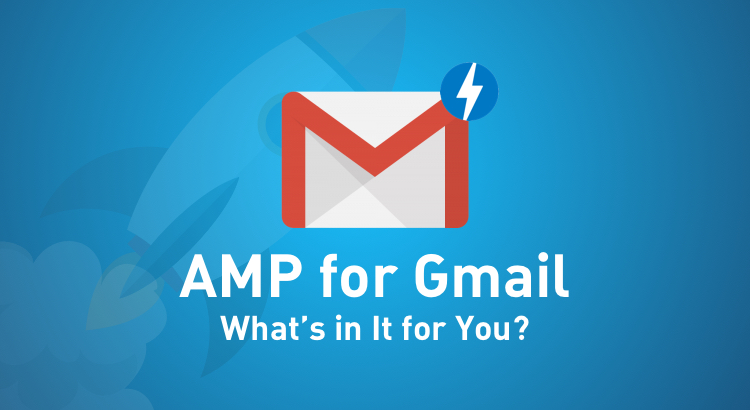The dust is yet to settle on Google’s Accelerated Mobile Pages (AMP) project launched a few years ago, but here is something fresh to mull over: Google’s AMP for Gmail project. Anything from Google is reason enough to sit up and take notice, the tech giant being the chief purveyor of our Internet experience.
AMP, introduced in 2016, was Google’s antidote for slow-loading mobile pages and lousy user experience. AMP strips down the HTML to some custom elements and eliminates JavaScript to create extremely lightweight pages that load at blazing speed. (Here’s a quick brush-up on AMP implementation.)
Racing to the top in search engine rankings, AMP-ified pages of publishers saw a jump in traffic and click-through rates (a 2017 study draws more sobering conclusions). All of this makes perfect sense in an attention-based economy, where users are willing to spare only three seconds of their time for a page to load.
But what will AMP bring to Gmail?
AMP for Gmail is About User Experience
Google wants to amp up the user experience by making Gmail dynamic and interactive. The project was rolled out on 26 March 2019, which means that by the time you read this post, a few of the emails you receive could have the AMP-effect.
For billions of users, Gmail is already a useful tool or Google wouldn’t own one-third of the market. People use it every day to interact and engage with others—albeit asynchronously—for personal and business reasons. But it is a shade too primitive when you compare it with the rich applications of today.
Every email is more like a dead end because no real action is possible within it. To take action, you must open a browser. For instance, to explore an offer emailed by OYO, you must hit their website, and then circle back to your email to get on with the rest of the agenda. On an AMP email, you can find the dynamic prices as well as the aggregate and individual ratings for each OYO property without leaving your inbox.
[caption id="attachment_18663" align="aligncenter" width="640"]
 OYO is implementing AMP to send fresh info on prices and ratings to its guests.
OYO is implementing AMP to send fresh info on prices and ratings to its guests.[/caption]
Source
Let's take a more corporate example: You want to find out your team’s availability for a meeting or an event. Once AMP for email kicks in, the recipients of your email can interactively pick a date from a list of options you send them—right within their inbox.
[caption id="attachment_18693" align="aligncenter" width="581"]

Doodle is among those to co-opt AMP for email. Doodlers will soon be able to send interactive emails to schedule events.[/caption]
Source
Think of all the times you have to leave your email: to track a shipment, resolve comments in Google Docs, browse a catalog, fill out a survey, RSVP to an event...AMP for Gmail will make it a snap.
Gmail, integrated with several other productivity tools such as Calendar, Docs, and Tasks, is a powerhouse in its own right. AMP-powered Gmail is a step up in productivity. AMP components like carousels, accordions, forms, and lists are optimized to minimize friction.
Another upside is dynamically changing content. With AMP, content is instantly refreshed, so when you open an email, you can expect to find the latest information.
What’s in It for Marketers?
If you're a marketer, you know that the email is no ordinary communication vehicle. A lot rides on it—your reputation, leads, and customer relationships. It is a formidable digital marketing tool for one that is so undemanding on the budget. If you need convincing, research data suggests that 44% of email recipients made at least one purchase after receiving promotional emails last year.
Given its huge potential for engaging users, AMP for Gmail could be the cherry on the cake for marketers. As email becomes more immersive, personalized, and real time, your messages could become more captivating, relevant, and actionable for users. Should AMP become the norm, static emails would no longer be cool in marketing, and you do want to look good before customers.
What’s in It for Developers?
The reaction from the developer community to the first AMP project was predictably mixed. Developers were happy for the users but they weren’t very happy about dealing with a new custom specification. The overarching concern was whether Google was trying to break the open Internet. Google has touched a raw nerve with AMP for Gmail too.
But if you’re a developer, you cannot really shake off the demand for AMP for email once it takes off. An AMP email is different from the current HTML email in that it limits the use of certain tags, attributes, and styles. If unsupported tags are used, AMP will simply not work.
AMP emails are created using components in the AMPHTML library. This is essentially a restricted subset of HTML that Google says is necessary to protect user privacy. If you have dabbled in it before, the learning curve is going to be more forgiving. You can create AMP content and test it using the tools offered by Google.
AMP for Email Is Not without Hiccups
To make AMP work on all email clients is still a bit of a challenge. It requires adding a MIME part with text-x-amphtml, which is not something other email service providers are going to readily resolve. Until they do, unsupported clients or mail services will render it as text/html or text/plain, which puts us back in square one.
We are no strangers to phishing scams, so security is another important aspect to be looked into. It is not yet clear whether loading applications in the inbox is going to be 100% safe. But Google appears to have foreseen some of the loopholes and taken adequate protective measures. As of now, you will have to register with Google to send AMP-powered emails.
Our Final Take
With AMP for Gmail, Google is preparing to pack more action into its traditional email. For a service that practically remained unchanged for 15 years, this is a major leap.
Whether AMP for Gmail will have a moment in the sun or lead to a major marketing hysteria, it is too early to tell. Brands such as Pinterest, Booking.com, redBus, etc., have already seized on the idea. Because of the extra oomph that AMP will bring to marketing, the number of takers is likely to swell. As other email service providers including Yahoo, Outlook, Mail.ru have expressed support for AMP, the adoption should be more widespread. Once it does, you don’t want to be caught lagging in your in-mail capabilities.
Reach out to us to custom code your AMP emails.
 OYO is implementing AMP to send fresh info on prices and ratings to its guests.[/caption]
Let's take a more corporate example: You want to find out your team’s availability for a meeting or an event. Once AMP for email kicks in, the recipients of your email can interactively pick a date from a list of options you send them—right within their inbox.
[caption id="attachment_18693" align="aligncenter" width="581"]
OYO is implementing AMP to send fresh info on prices and ratings to its guests.[/caption]
Let's take a more corporate example: You want to find out your team’s availability for a meeting or an event. Once AMP for email kicks in, the recipients of your email can interactively pick a date from a list of options you send them—right within their inbox.
[caption id="attachment_18693" align="aligncenter" width="581"] Doodle is among those to co-opt AMP for email. Doodlers will soon be able to send interactive emails to schedule events.[/caption]
Doodle is among those to co-opt AMP for email. Doodlers will soon be able to send interactive emails to schedule events.[/caption]


